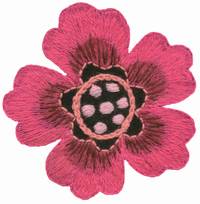 Muhu! An island where time stands still. This is the motto of Muhu Island.
Muhu! An island where time stands still. This is the motto of Muhu Island.
Remembering five wonderful summer days on Muhu Island, I can say that during that time, a completely different life and time ticked by for me – or rather, it was timelessness.
Igaküla is one of the villages on Muhu Island, on the western tip of the island, a few kilometers from the sea. At one time, it was the largest of the villages on the island. The locations of the villages were originally chosen where the limestone surface extended the most to the surface. The more clayey lands were left for fields. There are still stones here – cobblestones and granite. This is evidenced by the countless stone fences, old ones that have been buried under a soft, green carpet of moss over the years, with pink geranium and yellow cockscomb star flowers growing in the moss folds. But the new structures, built as handiwork of the present day, also catch the eye.
 From the village streets, surrounded by stone walls, gates lead to spacious farmyards. You won't find such a feeling of freedom, peace and protection as in the large, green, stone-walled farmyard on Muhu Island anywhere else.
From the village streets, surrounded by stone walls, gates lead to spacious farmyards. You won't find such a feeling of freedom, peace and protection as in the large, green, stone-walled farmyard on Muhu Island anywhere else.
 The abundance of stone is also evident in the stone-built dwellings. Still, limestone above all, and inside, hewn granite blocks sparkling in the sun – all the handiwork of the men of their island.
The abundance of stone is also evident in the stone-built dwellings. Still, limestone above all, and inside, hewn granite blocks sparkling in the sun – all the handiwork of the men of their island.
Where the stone fences and houses end, a juniper pasture begins. A winding path through July hay and tall, fluffy junipers leads to a majestic boulder.  This is the Eternal Stone, which has stood in the same place since the Ice Age. The junipers around this boulder have changed many times, countless generations of people have walked by the stone and sat on its crest. And now, at the end of the first decade of the 21st century, I am sitting there too. The rough stone surface is warm from the midsummer sun, the bramble bush caresses my cheek with its black berries, and the connection with the heavenly forces is physically perceptible.
This is the Eternal Stone, which has stood in the same place since the Ice Age. The junipers around this boulder have changed many times, countless generations of people have walked by the stone and sat on its crest. And now, at the end of the first decade of the 21st century, I am sitting there too. The rough stone surface is warm from the midsummer sun, the bramble bush caresses my cheek with its black berries, and the connection with the heavenly forces is physically perceptible.
Walking back through the rocks and junipers and picking flowers and leaves to draw and embroider, I realize that this is the Muhu embroidery of our ancestors. Here are rose hips embroidered into the famous Muhu roses, daisies, carnations, strawberries, clovers, several types of straw, poppies blushing in the garden, and probably also cornflowers and corn ears when the grain fields were still green next to the farmyards.
Thank you to the elders for their dexterity and sense of beauty. Thank you also to the following generations - daughters and granddaughters - for keeping this unique art alive.
I'm happy that I was able to be a part of all of this.
Wing Sparkle
